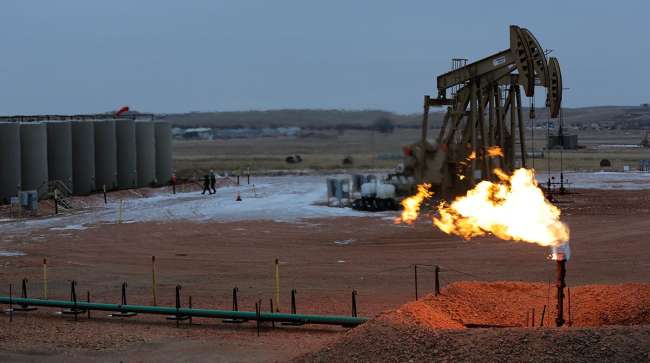Oil Poised for Weekly Decline Amid Weaker Demand Outlook

Oil slipped, heading for the biggest weekly loss in a month, as the outlook for demand dimmed in an already shaky market.
Futures fell 0.4% in New York Aug. 11, leading to a weekly decline of 2.4%. The International Energy Agency reduced demand estimates for OPEC crude this year and in 2018, and said there are doubts about the group’s commitment to cutting production. Even a pledge by Saudi Arabia and Iraq to strengthen their commitment to the curbs and maintain balance in world crude markets isn’t helping to prop up prices.
“With the latest rhetoric from the IEA, it looks like the balancing cycle is further protracted, which is not great for the market,” Michael Loewen, a strategist at Scotiabank in Toronto, said by telephone. Investors need to see either OPEC production really decline or compliance to the output-reduction deal improve to believe rebalancing is happening, he said.
Oil just hasn’t been able to stick to the $50-a-barrel level in New York even though U.S. crude inventories are at their lowest since October, in part because recent declines are seen as mostly seasonal. OPEC’s rate of compliance with output cuts slid to 75% in July, the lowest since the accord started in January, the IEA said. OPEC said Aug. 10 its output is increasing on supplies from Libya, which is exempt from the deal.
West Texas Intermediate for September delivery dropped 18 cents to $48.41 a barrel at 11:31 a.m. on the New York Mercantile Exchange. Total volume traded was about 7% above the 100-day average. The U.S. benchmark hovered near the 100-day moving average.
Brick Wall
Brent for October settlement declined 13 cents to $51.77 a barrel on the London-based ICE Futures Europe exchange. The global benchmark traded at a premium of $3.19 to October WTI.
The IEA Aug. 11 lowered projections for the amount of crude required from OPEC this year and next by about 400,000 barrels a day. About 32.6 million barrels a day will be needed from the group this year, less than the 32.84 million it pumped in July.
Earlier in the week, an Energy Information Administration report showed U.S. crude inventories dropped for a sixth straight week, yet gasoline stockpiles unexpectedly rose by the most since January.
This week’s inventory report “had a little bit of a bearish tilt to it. We usually don’t see gasoline builds at this time of year,” Tariq Zahir, a New York-based commodity fund manager at Tyche Capital Advisors, said by telephone. “We’re just stuck in this range here. $50 is definitely a brick wall.”
Oil-market news:
• Royal Dutch Shell Plc has restarted four units at its Pernis refinery and more will be brought online in the coming days, according to an environmental regulator.
• Saudi Arabia’s Energy Minister Khalid Al-Falih and his Iraqi counterpart Jabbar al-Luaibi met in Jeddah and agreed to ensure coordination of their policies, according to a report from the Saudi Press Agency.
• Al-Falih said deeper output cuts must be collective and agreed to by all 24 countries participating in an agreement to curb production, newspaper Asharq al-Awsat reports, citing comments at a press conference with Iraq’s oil minister.
With assistance by Ben Sharples, and Abigail Morris




